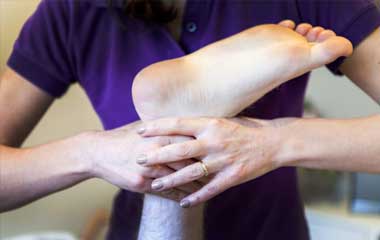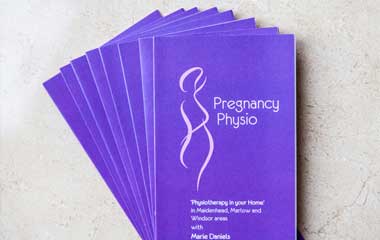
Postural Disc Pain
Typically, patients present with poor postures where the chin pokes forward and the shoulders become rounded often linked to sitting for long periods at a desk in front of a computer. As a result, the main supporting structures of the spine (muscles, discs and joints) become overloaded, causing pain. Patients tend to report aching around the neck, shoulders and shoulder blades which sometimes radiates down the arms.
Physiotherapy can help with:
- Soft tissue release or massage to relieve muscles that have become overactive and tight
- Manual therapy to loosen any stiff joints and muscles
- Acupuncture for pain relief
- Pilates to promote good posture, strengthening muscles that have become weak and stretching muscles that have become too tight through overuse
- Education and advice on workstation set up to help reinforce good posture
Muscle Spasm
Muscle spasm in the neck often develops immediately post injury and acts as a protective mechanism. Active trigger points (acutely tender spots) can then develop in muscles in spasm which may refer pain to other areas of the body, local or distal to the spine.
Physiotherapy techniques which can help involve:
- Soft tissue massage to release the trigger points and muscle spasm
- Exercise advice to strengthen weak muscles and increase flexibility of tight muscles
- Acupuncture to lengthen the muscles
Osteoarthritis
Osteoarthritis refers to wear and tear (degeneration) of the joints in the cervical spine which can also affect the nerves that exit from the spine. Typically, patients report stiffness and pain, which can radiate down the arm if the nerves are involved.
Physiotherapy can help with:
- Manual therapy to improve flexibility and posture
- Exercises to help increase the muscular strength around the joints to support the spine
- Acupuncture for reducing aching pain
Cervical Headache
A cervical headache can occur from abnormalities of the joints, active trigger points of the neck and shoulder muscles and stress on nerves in the neck. Poor posture and stress can also be contributory factors.
Physiotherapy can help with:
- Massage to release muscle tension
- Joint mobilisations for pain relief or to reduce joint stiffness
- Stretching exercises
- Posture correction
- Acupuncture for pain relief
Whiplash
This often occurs in a road traffic accident but also with sport. It involves the head and neck suddenly moving backwards and then forwards . Symptoms are often delayed for up to 48 hours post injury and include neck pain from damage to the cervical discs with muscles and ligaments also being affected. Early management with physiotherapy is important to regain the movement in your neck to prevent long-term problems.
Physiotherapy treatment can involve:
- Manual therapy with gentle mobilisation of stiff joints
- Massage therapy
- Stretching programme
- Acupuncture, especially for patients who do not tolerate a hands-on-approach
Acute wry neck
This is a common injury characterised by a sudden onset of sharp neck pain with loss of neck movement after a sudden quick movement (the patient presents with a fixed neck deformity – flexion, rotation and lateral flexion away from the side of pain) or on waking after a long sleep in an awkward posture.
Physiotherapy is helpful with:
- Massage to release muscle spasm
- Manual therapy to mobilise stiff joints
- Ultrasound for pain relief
Acute Nerve Root
Acute cervical nerve root pain is characterised by moderate to severe arm pain, tingling or numbness in the hand or arm and pain in the neck. It is caused by compression of the nerve root as it exits the cervical vertebra, swelling of the disc or bony growth (osteophytes). Patients often find relief in supporting their arm with the other hand.
Physiotherapy can help with:
- Manual traction to relieve nerve pressure
- Massage to reduce tension in the surrounding muscle tissue
- Advice on posture and sleeping positions, the use of ice and heat in combination and anti-inflammatory medication to reduce inflammation
- Acupuncture to reduce the pain and inflammation and restore normal sensation
Work related
Typically, patients present with a forward head and rounded shoulders, a slouched posture caused by prolonged sitting at a desk. Patients report an aching sensation around the neck and shoulders, muscle tightness and a loss of movement in the neck caused by stiffness in the joints.
Physiotherapy can help with:
- Manual therapy to loosen any stiff joints and muscles
- Massage to release trigger points and tension
- Pilates to promote good posture, to strengthen back, shoulder and core muscles and to stretch muscles that have become too tight through overuse








